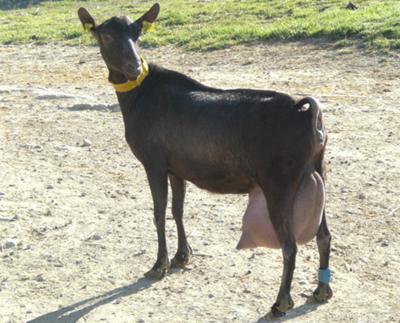Type the name of the breed you're looking for below
[wpdreams_ajaxsearchlite] Don't see the breed your're looking for? Click here and let us know!
Murciana goat
| Place of Origin | Spain |
| Origin | Murciana, also called Murcian, Murcien, Murciene and Royal Murciana is a dual-purpose (for both milk and meat) breed of goat originally bred in the Murcia province along the Mediterranean coast of southeastern Spain. Primary Murciana goat farming areas are in the region of Murcia, in the communities of Jumilla and Yecla. By the early 16th century, Murciana goats were well established in Spain, as were several other Spanish breeds, including the Malaguena goat, the La Blanca Celtibora goat, and the La Castellana Extremena goat, due to breeding policies set by Spain's long-established Sheepmaster's Guild. Display ads in The Goat World of the time indicate the Murciana goats were in the U.S. by 1920, referred to as the "Royal Murciana." Dr. C. P. DeLangle, in his article The Murcien Goat, printed in the August 1921 issue of The Goat World wrote of them, "The Murcien goat is one, if not the handsomest goats known." By 1936, the Murcianas may have become scarce in the U.S., as the January issue of the Dairy Goat Journal called for help to re-establish the breed, noting there did not seem to be a pure-bred buck in America, and that a Mrs. Katherine Kadel had the only purebred does at that time. The same article also noted a reliable supply of Murcianas could be found in Mexico, in a herd imported from Spain that also contained Granada goats. |
| Purpose | Meat, Milk |
| Characteristics | While it is shorter-eared than many goats, the Murciana has an ear which is shaped like those of the Swiss breeds, such as Alpines, Oberhaslis, and Saanens, and carried horizontally. They are known for being excellent producers of milk that is especially rich in butterfat. Goats from the Murcia and Malta breeds, including the Murciana, are more likely to breed out of season than are goats of the French Alpine and related breeds, due to concerted breeding efforts to culture this tendency, which may allow year-round freshening and milking. This breed may have actually originated in Africa stock. |
| Other Considerations | There exists in Spain an organization called Asociación Española de Criadores de Cabras de Raza Murciano-Granadina (ACRIMUR); the Spanish National Association of the Murciana-Granadina Goat. |



